
10 Concept Car Success Stories: The Ones that Made it to the Production Line
By Akweli Parker, How Stuff Works.
By Akweli Parker, How Stuff Works.
Ever since legendary automotive designer Harley Earl created what was arguably the first concept car in 1938, the public has been enthralled to witness the ever-expanding limits of technology combined with auto designers' unrestricted imaginations.
Traditionally, concept cars were usually extreme flights of fancy. With exaggerated bodywork and wildly impractical technology (on-board nuclear generator, anyone?), concept cars of the past boldly tossed reason out the window while pointing the way to a more fun motoring future.
The public almost came to expect that concepts - shown by automakers at trade shows and other events to gauge opinion and guide it - would either never make it to mass production or would be so watered down as to be unrecognizable when introduced for sale.
But sometimes concepts actually do make it to production. And there's a general historic trend that automakers gravitate toward making more "conservative" concepts that they can easily adapt into sellable cars during bad economies. In that spirit, we present to you these 10 concept car success stories.
10. Chevy Volt
The Chevrolet Volt concept car on display during the press preview days at the North American
International Auto show Jan. 7, 2007 in Detroit, Michigan.
International Auto show Jan. 7, 2007 in Detroit, Michigan.
The Chevrolet division of General Motors created the Volt hybrid electric-gasoline vehicle as a concept, first. Now, of course, anyone who has even a passing relationship with cars knows that they went on sale to the public in late 2010.
And even though all the big automakers have hybrids or other alternative fuel vehicles in their line-up, it wasn't an immediate slam-dunk decision at GM to bring cars like the Volt to market.
Even Bob Lutz, the GM marketing maverick who championed the Volt, at first ridiculed hybrids such as the Toyota Prius. But with truck and SUV sales down, the price of oil up, and a sagging economy forcing a government bailout of GM, it was clear GM needed to embrace new thinking.
The Volt was one of the most dramatic examples of GM's shift in strategic focus, boasting a 60-mile-per-gallon (25.5-kilometre-per-liter) equivalent when combining gasoline and electric modes. To some degree, you have to squint to see the relationship between the concept vehicle unveiled in 2007 and the production version than went on sale in 2010.
For example, the gun-slit headlamps and retro-squarish body made way for larger, Ford-esque HID headlamps and a wind tunnel-approved body that greatly lowered the coefficient of drag.
GM has taken some heat for pricing of the Volt - at US$40,000 or so, it's asking a premium price for a family sedan (albeit a highly efficient and technologically stunning one).
Still, the auto world has largely heaped praise on the Volt. Even though hybrids had been around for years, after the Volt's market entry, the GM "extended-range electric" managed to be innovative, practical to drive and unusually refined compared to hybrid and full-electric competitors.
9. Honda/Acura NSX
Image: Honda
Honda certainly isn't known for being the sexy car company. Quite the opposite - tuner cars notwithstanding, a Honda is what you drive in order not to draw attention. It's one reason why thieves love them.
That said, Honda runs a robust racing and performance division, from which it often derives race-tested innovations for its production cars. In 1985, Honda brass decided it wanted to make a production supercar - and it wanted to be competitive with the best in the world. Honda launched its NS-X project (originally it was hyphenated) and used assorted Ferrari models as the benchmarks. If the NSX looks suspiciously like an 80s-era Ferrari, it could have something to do with the fact that Honda hired Pininfarina, the design studio best known for creating the sexy contours of Ferraris, in its quest to build a supercar [source: Pininfarina].
The NS-X prototype first appeared publicly at the 1989 Chicago Auto Show.
By the time it hit the market in 1990, the around-US$60,000 NSX was hailed as a technological marvel. Badged as an Acura, it was the first car to be built with an all-aluminium monocoque construction, making it lighter by far than traditionally manufactured cars [source: Honda].
With sales of sports cars flagging by the mid-2000s, Honda decided it made little sense to go forward with a planned reboot of the model, and announced in 2005 it would stop producing the NSX.
The ray of bright news for NSX fans - after scrapping plans for a V-10 NSX successor in 2008, Honda has more recently said it is hard at work on an eco-friendly supercar that would be inspired by the old NSX.
Speaking of old, the next car on our list gives credence to the saying "what's old is new again."
8. Volkswagen New Beetle
Let's give credit where due - the New Beetle - penned by legendary auto designer J. Mays and Freeman Thomas, was sheer genius.
Say what you will about its polarizing looks, which seemed to divide people into two distinct camps. There are those who think it's as cool as all get-out; and those who think it's just plain weird, with its turtle-shell body that seems not to know whether it's coming or going.
The genius of the New Beetle lies not in the car itself, but in what it represented. In paying homage to the original Beetle, beloved by untold numbers of Baby Boomers, Volkswagen's re-imagined version tapped into a well-spring of nostalgia. And sales. The Concept 1 made its debut at the 1994 Detroit Auto Show; overwhelming positive feedback prompted VW to place the car into production.
Soon, other car companies started clamouring for a piece of the retro-nostalgia pie. Chrysler came out with the PT Cruiser, a throwback to 60s-style panel wagons, while Ford made an attempt to go "retro" with its Thunderbird nameplate. By 2010, the retro craze had brought muscle cars back to the future, with Ford's Mustang, Dodge's Charger and the Chevy Camaro all getting resets.
It's hard to believe the "New Beetle" has been around for more than 20 years. So long, that it has finally gotten a complete re-do - starting in 2012. The successor is longer, flatter and more aggressive-looking than the "aww"-invoking Bug of yester-decade. But like its predecessors that sold more than 20 million copies worldwide, the newest "new" version clearly pays tribute to the design roots that won the model so many admirers.
7. Ford GT
Image: Wikimedia Commons
With all the good car names taken, sometimes a manufacturer would rather just rely on the aura of a known brand rather than make up a faux-Latin name that makes people scratch their heads and say, "huh?" You read about some of them before this.
One more to add to the list is the Ford GT. Also a concept at the time of its unveiling (2004 Detroit Auto Show), the GT evoked the memory of Ford's GT40 race car of the 1960s. Primarily due to licensing issues, Ford abandoned thoughts of reviving the full GT40 name and instead just called it the GT.
The timelessly classic lines don't give much of a clue as to the modern GT's advanced technology. Among other new features on the modern GT were an aluminium engine, aluminium space frame and modern, computerized fuel injection [source: Ford].
One area that does ring authentic to the past is the 550-horsepower GT's fuel economy - it gets a ghastly 14 miles to the gallon (6 kilometres to the litre) in combined city and highway driving.
With cars, beauty and speed always come at a price. But as our next concept-turned-consumer good shows, the price doesn't always have to be fuel efficiency. Read on to see a green speed demon that you can own, if you have enough green.
6. Porsche 918 Spyder
Image: Wikipedia
For many years there seemed to be an unwritten rule when it came to car building cars: If you wanted high performance and fuel efficiency, well, you always had to choose just one. Even early hybrid performance cars didn't seem to do much in the friends-of-the-environment department. Typically their electric motors were used simply to hike up rated horsepower rather than get more miles to the gallon.
The Porsche 918 Spyder concept - approved for production - wraps the old "power versus fuel economy" argument in a tidy cocoon and dispatches it with the methodical efficiency of a ravenous arachnid. Debuting at the 2010 auto shows in Geneva and Beijing, the 918 Spyder put a green twist on the well-liked but out-of-production Porsche Carrera GT. Public reaction to the 918 was swift and positive, prompting Porsche bigwigs to fire up the assembly lines [source: Porsche].
Not one, but two electric motors augment the 500-horsepower gasoline engine, and the electrics add a combined 218 effective horsepower. If there was ever any doubt that the trend toward alternative fuel vehicles was here to stay, surely outfitting of supercars such as the 918 Spyder with efficient power plants lays those doubts to rest.
The hybrid electric motors aren't just for delivering raw power, either. The car is capable of returning efficiency ratings in the neighbourhood of 80 miles per gallon (34 kilometres per litre).
But before we get too carried away in praising this Porsche, we need to make clear that with supercar performance and technology comes a supercar price tag. This replacement for the much salivated-over Carrera GT is expected to set a buyer back by about US$850,000. Just goes to show that what automotive engineers say is true - while the Porsche does amazing things to get its 918 Spyder so efficient, "there's no such thing as a free lunch."
While that may be the case, there is such a thing as two, or even three for the price of one. Read on to find out which concept will inspire at least three different production car brands.
5. Toyota iQ
To keep average global temperatures from going much higher and causing civilization-threatening weather, the countries of Europe are demanding more stringent emissions requirements of automakers for their fleets.
Where does that leave luxury sports car makers like Aston Martin? One possibility is that it prompts them to form unusual alliances, like the one they entered into with Toyota to re-brand the Toyota iQ as the Aston Martin Cygnet.
OK, let's back up - what's a Toyota iQ? It's a quirky little pod of a car meant to move a person or three around a city with little fuss - and little flash. Its tiny size means it's easy to park. As a "city car," it's similar in size and concept (hmm, and even name) to the Smart Fortwo.
Not only will Toyota also build the iQ microcar for the U.S. market as a Scion (whose buyers already like small, quirkily practical vehicles), but it has licensed the platform to Aston Martin to sell in Europe as the "Cygnet." Aston Martin, the brand popularized by Her Majesty's favourite blunt instrument of diplomacy, Agent 007, will give the iQ, ahem, Cygnet, its own signature look and slap on an additional US$34,000 or so to the US$16,000 sticker price.
Like the rest of the cars on our list, the iQ began life as a concept vehicle. It first appeared in public at the 2007 Frankfurt Motor Show.
Back when the term "think outside the box" actually meant something, the next car on our list took the directive literally.
4. Audi TT
Today, the elliptical profile of the Audi TT almost blends into the background of automotive shapes we see on the road, it's become so commonplace. But when the TT concept appeared in 1995, its oval geometry was revolutionary in an industry still enamoured with rectangles, straight lines, and - when designers got really adventurous - wedges.
If the Audi bears a vague resemblance to another ovoid-shaped car on our list, the Volkswagen New Beetle, well, that's no coincidence. The Audi TT was also designed by J Mays and Freeman Thomas at VW's California design centre. Its first public appearance was as a concept at the 1995 Frankfurt Motor Show.
The "TT" in Audi TT is a reference to the Tourist Trophy race on the Isle of Man, in which Audi's corporate forbear enjoyed many years of success.
The TT would get a second-generation redesign in 2006 (and would be known as the TT Mk2), becoming less bulbous, flatter, and more modern-looking. But as with other remakes, the designers appear to have left the soul of the reference vehicle intact when creating the replacement.
The next car on our list is a classic American comeback story.
3. Chevy Camaro
In the new muscle car wars, the Blue Oval Boys - Ford Motor Co. - shot first. And they made a killing with their retro-inspired Mustang, released in 2005.
Around the same time, crosstown rival General Motors was undergoing its own design renaissance, of sorts. Seeking to claw back market share that had been gobbled by more adventurously designed imports, GM was fielding a bevy of status quo-disrupting vehicles. The jewel in its crown was a revived Camaro. After four generations of Camaro since 1966, GM pulled the plug on the model in 2002.
The "new" Camaro would be bold, powerful, nostalgic and yet futuristic at the same time. The concept met to rave reviews in 2006, and despite the narrow market for sports cars, GM quickly confirmed that it was intended for production. The model went on sale in 2009 and famously appears as the Autobot "Bumblebee" in the Transformers movies.
So far we've covered lots of cars from the modern era, but even in the days of wilder, more preposterous concept cars, some actually did get built. Find out about one such instance, and icon, next.
2. Chevy Corvette Sting Ray
In 1961, Chevy designers created a vehicle that looked like it could have sprung from the pen of a modern-day Hot Wheels artist. Dubbed the XP-755 Mako Shark, the car sported a long snout bristling with vents, massive rocker-mounted exhaust pipes and a shark-inspired two-tone paint job.
A smash hit at auto shows, the Mako Shark went on to become - largely untampered with - the 1963 Corvette Sting Ray.
In an early example of product placement, General Motors supplied a Mako Shark car to appear on the popular television series Route 66 (it was one of many vehicles the company routinely put on the program) [source: General Motors].
To this day, the Sting Ray remains one of the more memorable and classic iterations in the Corvette's long and storied evolution.
The final concept car on our list is a fire-breathing, radioactive, giant lizard from Japan. OK, not literally, but this entry from the Land of the Rising Sun has terrorized its much higher-priced rivals on the track since its debut.
1. Nissan GT-R
Among enthusiasts of Japanese performance cars, no list of greatest rides would be complete without mentioning the Nissan Skyline, in particular its GT-R variant. Popular with the "drifting" crowd, the GTR nonetheless went on indefinite hiatus in 2002.
Nissan unveiled one truly "conceptual" concept of a re-imagined GT-R in 2001, but it was a later concept attempt in 2005, the GTR-Proto, that would eventually see life as a production vehicle. The new GT-R, minus the "Skyline" moniker, went on sale in Japan in 2007 and in the United States the following year, followed later by other world markets.
With original performance of 485 horsepower, 434 foot-pounds of torque and a 193-mile per hour (310.6-kilometre per hour) top speed, the GTR delivered world-class supercar performance for about US$80,000. (Performance numbers later improved as both Nissan and aftermarket tuners found ways to free-up and bolt-on horsepower.) Affectionately known as "Godzilla," the GT-R still isn't what you'd call easily accessible to Joe Lunchpail. But it's a much more believable aspiration for working stiffs than the GTR's six-figure competitors from Europe.
So there you have it - 10 examples of proof that automotive designers' and cool car enthusiasts' dreams can and do come true. For lots more articles, photos and other information about concept vehicles, follow the links below.
Article Sources:
1. Abuelsamid, Sam. "Frankfurt 2007: Toyota iQ concept details and pics." Autobloggreen. Sept. 12, 2007. (Dec. 15, 2011)
2. Auto In The News. "Have We Seen the Demise of the Concept Car?" Aug. 23, 2010.(Dec. 13, 2011)
3. AutoTalk.com. "Aston Martin Cygnet Confirmed for Production." Oct. 11, 2010. (Dec. 15, 2011)
4. Bowman, Bill. "Mako Shark Chevrolet Corvette Concept." GM Heritage Centre. (Dec. 16, 2011)
5. Carautoportal.com. "Audi TT." (Dec. 14, 2011)
6. Edmunds.com. "Volkswagen New Beetle History." (Dec. 15, 2011)
7. Ford Media. "Living Legend Comes to Life as Ford Delivers First Production 2005 Ford GT." Aug. 4, 2004. (Dec. 14, 2011)
8. General Motors Press Release (Archive). "Auto Buyers Have Spoken: GM Will Build An All-New Chevrolet Camaro." Aug. 10, 2006. (Dec. 16, 2011)
9. Harley, Michael. "Audi TT-S to be Official Car of the Tourist Trophy Races." Autoblog.com. April 25, 2008. (Dec. 15, 2011)
10. Honda.com. "Honda to Discontinue Production of the NSX Sports Car." July 12, 2005. (Dec. 16, 2011)
11. Lassa, Todd. "Chevy Volt Is Early; Corvette Is Late." Motor Trend. Sept. 28, 2007. (Dec.14, 2011)
12. Nissan. "Nissan Announces New Nissan GT-R." Oct. 24, 2007. (Dec.15, 2011)
13. Pininfarina. "Honda HP-X." (Jan. 20, 2012)
14. Porsche.com. "Porsche 918 Gets Green Light for Series Development." July 28, 2010. (Dec. 13, 2011)
15. Savov, Vlad. "Porsche 918 Spyder concept is the most beautiful hybrid we've ever seen." Engadget. March 2, 2010. (Dec. 13, 2011)
16. Siler, Steve. "2010 Chevrolet Volt - Official Photos." Car and Driver. August 2008. (Dec. 13, 2011)
17. St. Antoine, Arthur. "The Asphalt Jungle: Ayrton's Car." Motor Trend. April 2006. (Dec. 16, 2011)
18. Toyota. "TMC to Tweak iQ for Individuality - Aston Martin Version Planned for Europe." June 29, 2009. (Dec. 15, 2011)
Related Articles:
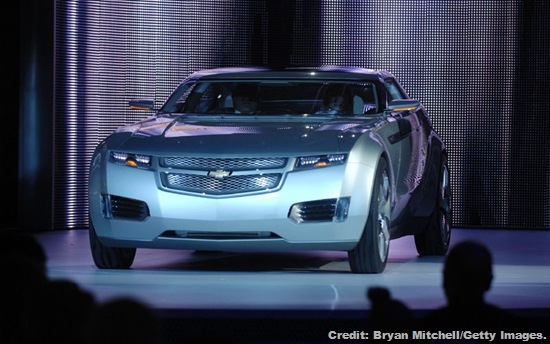
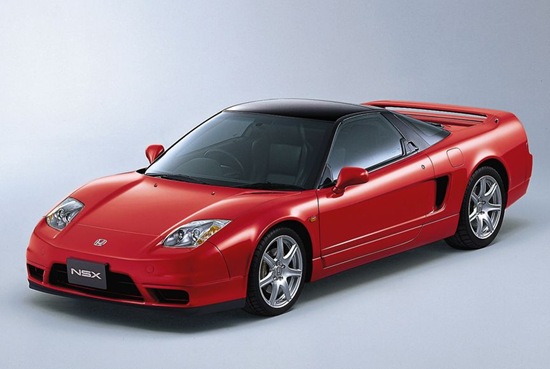
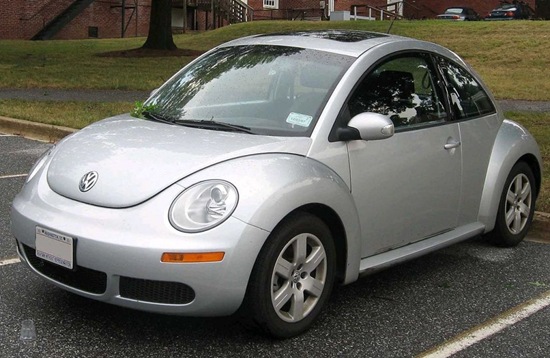
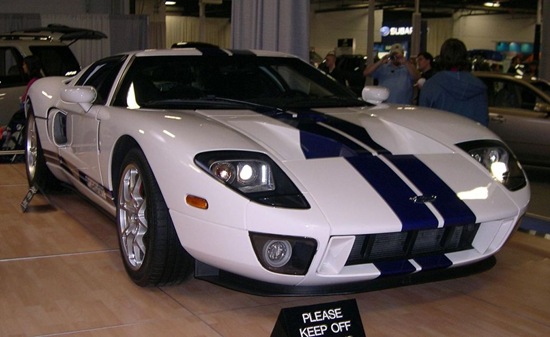
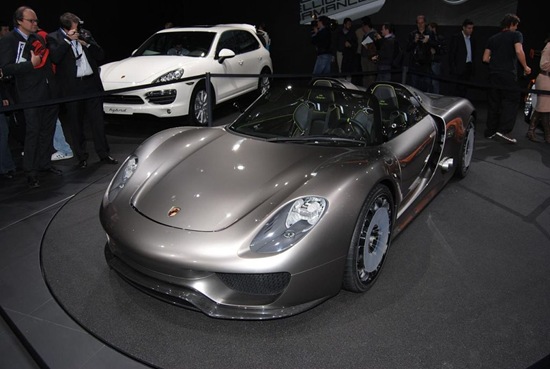

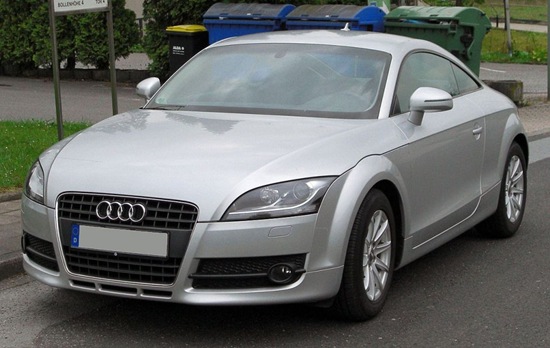
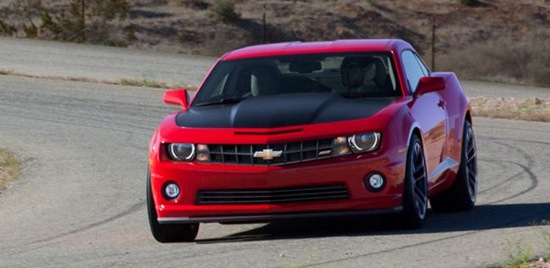

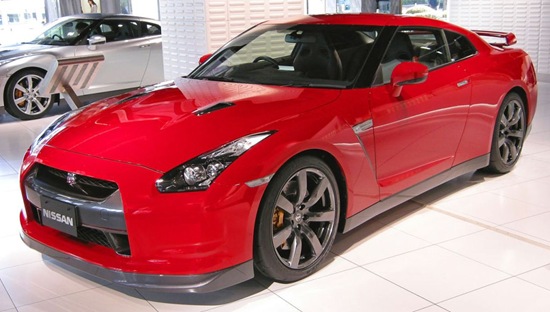
No comments:
Post a Comment
Please adhere to proper blog etiquette when posting your comments. This blog owner will exercise his absolution discretion in allowing or rejecting any comments that are deemed seditious, defamatory, libelous, racist, vulgar, insulting, and other remarks that exhibit similar characteristics. If you insist on using anonymous comments, please write your name or other IDs at the end of your message.